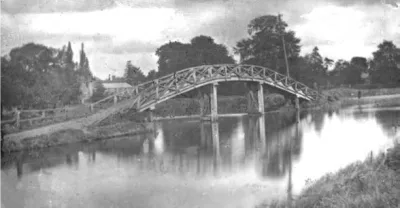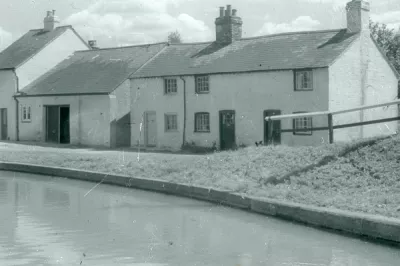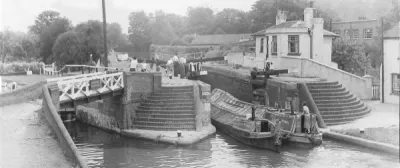The Grand Junction Canal
Water transport through Three Rivers


The Grand Junction Canal was conceived in 1791, surveyed in 1792, started in 1793, and in use to connect Hertfordshire to London in early 1799. But that was never its aim: the point was to connect the growing industries of Birmingham, the midlands and the north of England to the great city, and vital port, of London, while reducing the cost of coal at places in between - such as Northamptonshire, Bedfordshire, Buckinghamshire, Hertfordshire and Middlesex. It was an essential industrial connection, and had a great influence on the progress of the industrial revolution. It was in service throughout early in 1800, and open as a single waterway when the Blisworth tunnel was finally completed in 1805.
Although it was never intended to have much effect on Hertfordshire, there was some development aside from the reduction in the cost, and increase in the availability, of coal. For example, iron, previously in very short supply here, began to move in great tonnages towards London, and at least some of that helped set up new iron working businesses in Hemel Hempstead, Berkhamsted and Watford: these iron foundries often developed into engineering manufacturing businesses, George Tidcome of Watford being an example as he moved into paper machinery from about 1830. The new canal also helped the papermaker John Dickinson improve his mills at Apsley (1809) and Nash (1810), and build new ones at Home Park (1826) and Croxley Green (1830), with Batchworth being used to make paper pulp from rags from 1819. Even before Dickinson the Fourdrinier brothers has been using Two Waters and Frogmore Mils, where they had set up the first mechanical paper making from 1803: it seems likely that they had been using the canal passing by Hemel Hempstead for some time before Dickinson arrived.

The canal passed through Three Rivers from Kings Langley, Abbots Langley and on to Rickmansworth having followed the river Gade through Grove and Cassiobury Parks. Wharfs were set up in all those places, with Watford served from Cassio Bridge on the edge of Croxley Green and Rickmansworth by Frogmoor Wharf, Batchworth Bridge and Town Wharf (reached through the river Chess side lock at Batchworth) in Rickmansworth. A later arm was cut to serve the bakery of John Taylor at the Bury (1845), and the boat builder and builder's merchant Harry Walker took over Frogmoor Wharf in 1905 to form an important canal-based business.
In the early 20th century huge amounts of gravel were extracted from pits around Rickmansworth and taken by canal to London and to Croxley Green, where if was sorted and moved by the Metropolitan Railway towards London, where it provided vital material for the development of Metroland until about 1939.
The Grand Junction was one of the thirteen canal companies which came together on 1 Jan 1929 to form the Grand Union, by which it has been known ever since.
After the introduction of steam and later diesel propulsion the erosion of the canal banks required very extensive protective lining, and hundreds of miles of concrete piling was installed especially in the 1930. One of the plants making this piling was at Batchworth, on the site now occupied by Three Rivers District Council.
Further information is here. This article will be expanded over the coming weeks.